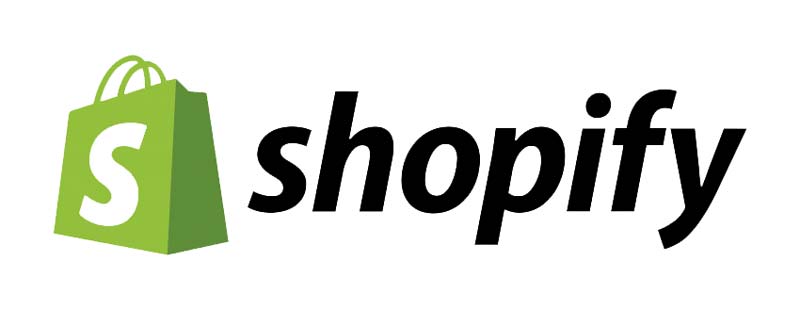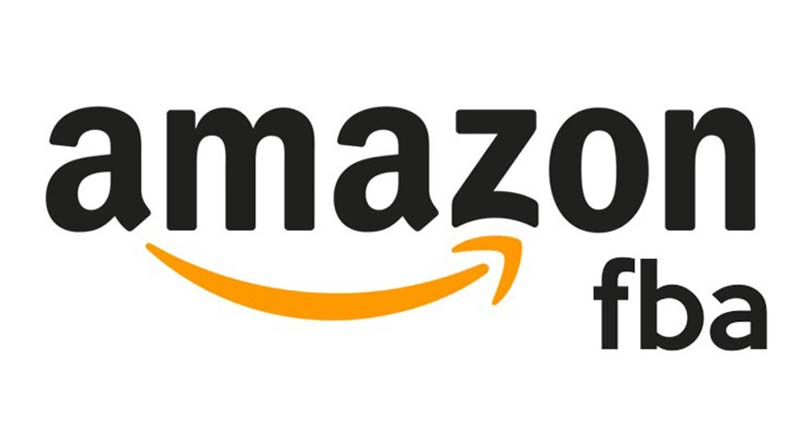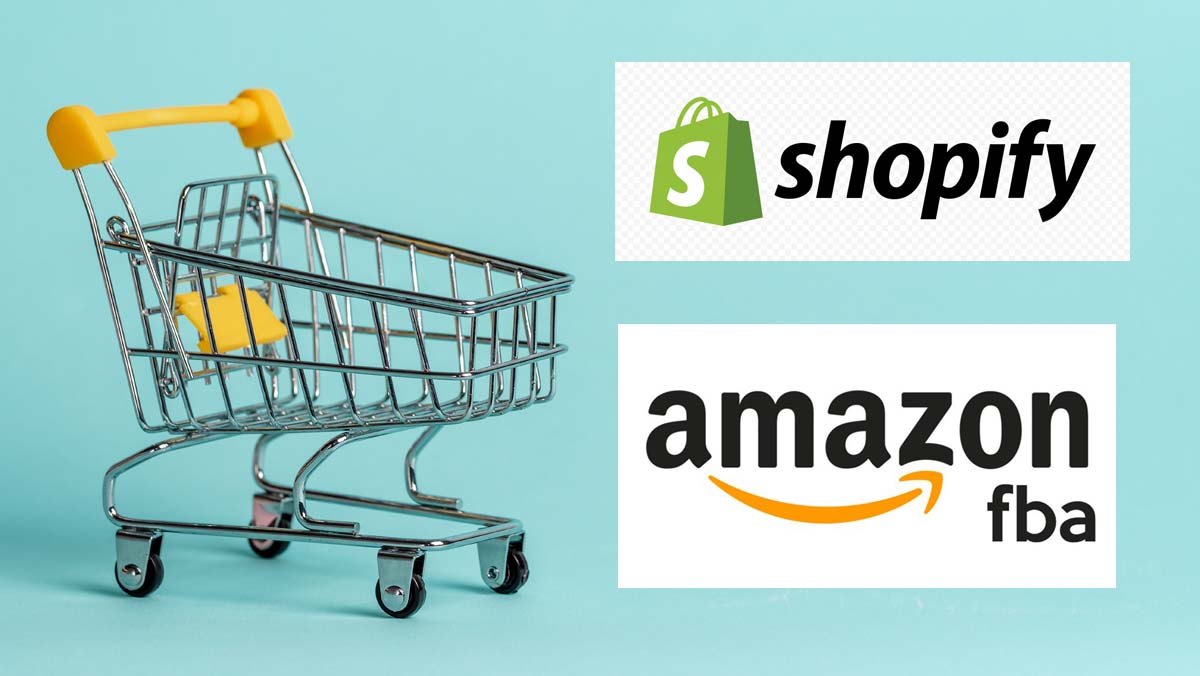You’ve got a product to sell and want to tap into eCommerce by selling through either your own Shopify store or Amazon FBA. By selling through the top front runners in online platforms, you’re sure to get noticed and boost your sales.
But, which one is best? It depends. Each platform has its own niche where it shines.
What is the major difference between the two, and which one is right for you?
Basically, Amazon is an established marketplace that helps you facilitate sales. Whereas, Shopify is a secure eCommerce platform that gives you freedom to build and customize your brand.
Read our comparison between Amazon vs Shopify to find out which eCommerce platform is right for you.
Shopify Overview
Shopify is a platform that allows you to build a website and take control over marketing. Essentially, it is a website hosting platform that integrates eCommerce.
Consider Shopify to be like your own personal storefront. Shopify is perfect for sellers who want to focus on creating online stores to sell just about anything.
Simply put, Shopify is software that allows sellers to set up an online store where they are able to sell products. Of course, there is more to Shopify than a simple explanation.
Web Hosting
One of the reasons sellers love it is because of the free web hosting. Free web hosting means that your online store uses their servers to handle everything related to the site, including security and software updates.
You also get to use Shopify’s checkout which is optimized to be fast and provide an excellent customer service experience.
No Coding Needed
Shopify requires absolutely no technical or coding expertise to get started. Design your entire site using a drag-and-drop builder, and be ready to sell unlimited products in no time.
Many Sellers Choose Shopify
Shopify is a specially designed platform that gives you all of the needed tools so you can build your own online store. Many sellers get started using this platform.
Shopify has more than one million stores selling with its software and providing an excellent customer experience for buyers.
Any Seller Size
The eCommerce platform is for business owners of any size from a sole proprietor to a huge corporation. The software offers many options including even a Point of Sale option for sellers with a physical store and physical products to sell.

Fully Hosted
Use Shopify to sell from any country around the world. The system is easy to use, and you don’t need any special coding skills to start building your own website for selling. It is a fully hosted platform which means you won’t have to worry about paying domain or hosting fees.
Personalize And Run Your Business
Shopify helps make it easy to set up your personal shop and start selling. The platform even offers a logo maker.
Additionally, Shopify provides you with an inventory system, automatic tax calculations, a pay stub generator, and even the option to receive tips.
Shopify partners with a third-party to offer sellers drop-shipping features as well.
The basic Shopify plan includes all of the tools you need to take your product ideas and start selling. Choose from several templates to set up your online storefront. Build a site, and sell from only that one site.
Or, sell in multiple online and in-person spots.
One-Stop Shop
The basic Shopify plan allows you to run your business online with their one-stop-shop. Depending on the plan you choose, Shopify provides:
- a storefront
- a payment processor
- a shipping partner
- a back office
- marketing headquarters
As soon as you enroll in Shopify, you have an online store at your fingertips. Start selling products, create web pages, and upload blog posts.
Secure Payments
Shopify allows you to integrate payment processing that buyers trust. You can choose from more than 100 options or opt to go with Shopify payments so you don’t have to set up a third-party provider.
Overview of Amazon FBA
Amazon FBA stands for Fulfilled By Amazon. Selling through Amazon is as if you have your own little shop inside an already bustling mall. As of August, 2021, Amazon statistics show that it attracts more than 2.5 billion visitors a month.
On average, Amazon sells more than $17 million worth of merchandise every hour. As an Amazon FBA seller, you have the potential to tap into some of this profit.
What Type of Sellers Use Amazon FBA?
Amazon is a great platform to sell on for new sellers who are looking to build a customer base. Consider Amazon FBA if you don’t actually have a store of your own, or you simply want your product to get noticed by tapping into Amazon’s established customer base.
Basically, Amazon FBA is a fulfillment network that allows you to sell on their site and use their warehouses or fulfillment distribution centers. You store your products in one of Amazon’s fulfillment centers.
When you make a sale, an Amazon employee picks, packs, and ships the item. They also provide customer service and handle returns and restocking. There are some fulfillment fees and a monthly fee to utilize it.
Motivated Sellers Come To You
Having an Amazon seller account gives you immediate access to millions, or billions of shoppers and helps you store and ship merchandise. Instead of building your own website and determining your own marketing strategy,
Amazon allows sellers to join the huge and established platform by creating a seller account. Shoppers come to you on Amazon when they are ready to buy.
Immediate Visibility
If you want your products to be highly visible almost immediately with no additional marketing efforts on your part, Amazon is the platform to turn to.
Amazon FBA works great for those who want to start selling products immediately. With just a few clicks, your items are made available to a wide range of potential customers from around the world.

No Website Design Knowledge Needed
It requires very little website design knowledge, though you do need to follow Amazon’s guidelines for product listings. You don’t have to drag and drop a beautiful website and you don’t need to know how to code.
Easy To Set Up And Ship Products To Amazon
All you have to do to set up FBA is to create an Amazon selling account, login to Seller Central, and set up FBA. After you have added your products to the Amazon catalog, specify FBA inventory.
After that, it’s time to prepare your items for shipping them to a fulfillment center. All you have to do is follow Amazon’s guidelines, pack up a box, and take it to your local UPS store.
The process is simple: Create a shipping plan. Print your shipment ID labels. Ship your items to Amazon.
After Amazon receives your items, they will be made available for customers to purchase them and Amazon handles the rest. All you have to do is make sure you keep your store stocked with great items.
Amazon FBA vs Shopify | Fee Comparisons
Both platforms offer plans at a cost.
Shopify has a basic plan that is less expensive than Amazon’s Professional membership fee. However, you don’t get all of the analytics you need with the basic plan.
If you opt for Amazon’s free individual sellers plan, you pay when an item sells. This sounds great up front, but if you sell more than 40 items a month, you’d be better off going with the $39.99 professional seller fee.
Also, you will need to factor in marketing expenses with Shopify. Whereas, the ready-made-customer base is part of the charm of what you pay for with Amazon.
To sell on Amazon, you choose between:
- an individual plan
- an Amazon professional plan
Amazon Individual
With the individual plan, you pay nothing to list an item. If it sells, you pay $0.99 per sale plus a referral fee depending on the category. The individual plan may be right for you if you sell less than 40 units per month
Amazon Professional
Amazon professional costs $39.99 per month regardless of how many items you sell or don’t sell. Additionally, you also pay a referral fee depending on the category for each item sold. Referral fees range from between about 8% to 45% per unit sold.
Amazon FBA sellers do well when their products are smaller and pricier items that tend to sell fast.
This plan may be right for you if you sell more than 40 units per month, want to advertise your items, or want to qualify for top placement and have access to tools for advanced selling tools. If you want to sell in a restricted category, you will need to be an Amazon Professional seller.
Additional Amazon Fees
When you use Amazon FBA, there are additional fees such as storage fees for inventory storage based on size and weight. There are also fulfillment fees charged per unit. Additionally, there may be extra costs such as removal order fees or returns processing fees.
The exact cost is going to depend on what time of year it is as well as the size and weight of your products. Often Amazon FBA will cost as much as 40% of every sale as the bottom line.
However, many find that the sales volume they do through Amazon more than makes up for the fees.
Shopify Fees
Shopify offers five pricing plans to choose from:
- Shopify Lite – $9 per month, gets you the right to use a buy button on your site but not to build a site of your own.
- Basic Shopify – $29 per month gives you access to unlimited product hosting, store tools, staff account, 24/7 support, social media integration, discount codes, an SSL certificate, gift cards, and abandoned cart recovery.
- Shopify – $79 per month includes professional reports, additional staff accounts, USPS shipping labels, and additional locations. You also get fraud analysis, and Lite POS technology.
- Advanced Shopify – $299 per month is for large companies and allows you to sell in up to 5 different languages, access international domains, and provides you with fraud analysis and premium service.
- Shopify Plus – Starts at $2,000 per month and is the enterprise level for large-volume stores.
Shopify also offers discounts for pre-paid annual and bi-annual subscriptions.
Depending on which plan you choose, you will also pay between 2.4% to 2.9% per transaction plus 30 cents. The higher the membership tier you choose, the lower the transaction and additional cents per transaction you pay.
Amazon FBA vs Shopify | Which is Right For My Ecommerce Business?
To determine which is right for your online business, ask yourself what you want your business to accomplish. What is your business model, and how do you want to sell your products or in your own store?
Also know your limitations and where you personally excel.
Things to consider:
- Do you want complete control and flexibility to market your items and establish your own brand? If so, Shopify is the way to go.
- On the other hand, if you prefer to tap into a ready-made platform that reaches worldwide customers ready to buy, but you give up some control and enter a competitive marketplace, then Amazon FBA is the way to go.
Let’s compare Shopify vs Amazon to see which one is right for your eCommerce business. First, think about the practicality of how day-to-day sales will take place using each platform.
- One platform may provide excellent customer support, but what happens if you as a seller have a question? Will someone be there to help when you need them?
- Consider the steps to setting up your storefront or listing a product. How easy does each platform make that work?
- Finally, think about which one has the best and easiest to use analytics and sales reports.
Consider these important factors of how the two platforms compare when it comes to seller support, ease of use, and analytics and sales reports.
Seller Support
When it comes to getting answers and help with your online sales, the two platforms vary. Shopify offers amazing support with 24/7 phone support or live chat.
Whereas, Amazon provides beginners with an informational guide and additional support based on which plan you purchase.

Ease of Use
Both platforms realize that just because you’re an online seller doesn’t mean you have online coding and website building skills. No coding experience is needed for either platform.
Shopify offers templates to make it easy to set up a site of your own in minutes. The rest of Shopify you can easily learn as you start selling through dashboards and toolbars that are easy to understand and use.
If you want, you can also hire an SEO expert through the Shopify Experts Marketplace to help you get noticed online.
Amazon is also easy to use but does not allow you to customize your online look like Shopify does. However, your listings will look great and uniform alongside other listings on the site.
Amazon makes it easy to create an account and start selling. The main problem many sellers encounter is uploading a product image that meets Amazon’s criteria. But, once you learn what is required and how it is done, it gets easier.
Analytics and Sales Reports
Online selling involves so much more than simply sourcing a product and listing it. To really grow your eCommerce business, you will need to understand the buying habits of your customers.
You can only do this if you have proper analytics and sales reports.
Shopify lets you view sales by the month, day, or week. The Shopify analytics even breaks down sales by times of day. It supplies you with immediate conversion rate highlights, add-to-cart date, abandoned carts information, and data on completed checkouts.
Shopify also allows you to connect Google Analytics for even more in-depth reports.
With Amazon, brand analytics are only available to sellers who own a brand.
Here are the pros and cons of Amazon FBA Vs. Shopify:
Amazon FBA Pros
- once your product is live, you have an immediate audience with customers who are almost automatic and easy to find
- eCommerce store built in
- access to advanced advertising tools such as sponsored products, brands, or display ads.
- tap into their reputation of a ready-made global marketplace which means customers are more likely to buy from Amazon than other eCommerce sites
- constant innovation of improvements
- high-volume traffic
- shopper confidence
- simple to sign up and sell immediately
- built-in customer service to your buyers
- two selling plans with the individual sellers plan great for small-scale sellers
- qualify for Amazon Prime and buy box potential
- multi channel fulfillment
- free 30-day trial with a Pro account
- no coding experience necessary
- handles inventory storage, shipping, customer service, and returns for you
- updates and security are both managed for you
- analytics and sales reports
Shopify Pros
- An attractive online store that offers an easy set up process and use
- offers you full control without a lot of competition
- excellent 24/7 seller support
- easy to create unique brand identity
- mobile responsiveness for a user-friendly storefront from any device
- free 90-day trial
- flexible design options
- you create the rules for your store
- potential to build and grow your business
- user friendly
- sell one product or as many as you like
- plugins and app downloads available to add functionality
- offline and POS selling opportunities and integrations
- ready-to-use templates, tools, and apps that require no coding knowledge
- easy-to-use dashboard
- fully functional online store once you activate your account
- Shopify is fully hosted with no additional maintenance costs
- multichannel possibilities
- high level of security and reliability
- quality customer and seller support
- fast loading speeds
- variety of excellent sales features
- access to a variety of eCommerce tools
Amazon FBA Cons
- users must follow strict guidelines and don’t have complete control over their sales
- highly competitive with other sellers
- sell physical products only
- no design customization options
- higher selling fees than some platforms
- no control over your store page
- competitors use undercutting tactics
- no access to customer list
- Amazon can change its rules at any time and suspend sellers without notice
- monthly subscription fee and transaction fees
- limited selling variety and payment options
- difficult to track your inventory
- high return rate
- shipping prep is time-consuming
- budgeting for fees is difficult
- difficult to personalize customer service
Shopify Cons
- monthly subscription fees
- no built-in marketing
- advertising costs
- learning curve for setup process
- varying aspect ratios of images
- apps required to access many features are not free
- Shopify offers only 9 free themes
- lowest tier plan doesn’t offer full online store
- difficult to achieve Amazon SEO search engine optimization levels
- customization options are limited and costly
- 3 option limit per item
- only provides one abandoned cart follow-up
- takes time to build traffic to the site
- potentially high marketing costs
- no established reputation to tap into
- access to reports is not available with basic plan
- transaction fees apply when using third-party payment provider
- after the free trial ends, there are no free plans
- not designed for B2B
- requires more hands-on time
- you handle or hire third-party help for shipping, inventory, payments, and marketing
- no professional reporting with basic package
Why You Should Use Both Amazon FBA & Shopify
No matter what you sell, it’s always a good idea to diversify. So, the good news is that you don’t have to choose between the two and decide on just one. Actually, the two selling platforms serve different purposes.
Tapping into both could prove to be very beneficial for your bottom line. Combine the two to take advantage of features that the other platform may not have.
Many eCommerce sellers find that they are able to grow their online presence by using both Amazon FBA and Shopify by cross-selling products and integrating both platforms.
Some sellers set up a Shopify site to get their name out there and prove that their store and brand is legitimate. While tapping into Amazon’s enormous marketplace helps boost sales quickly.
When you integrate the two, the integration will pull your Shopify listings onto Amazon. Amazon provides more detailed instructions on how to integrate using Amazon FBA.
Why not get the best of both worlds? Leverage the power of both Shopify and Amazon FBA. Combine the best of both worlds.
Enjoy the control and flexibility of designing your own selling site through Shopify and tap into the largest online marketplace through Amazon.
Ultimately, you should choose the platform that accomplishes the tasks that you dread doing. For instance, if you do not follow rules well, Shopify will be your choice. If you aren’t very good at marketing, Amazon FBA is your way to go. As your sales grow, combine the two platforms for even faster growth.
Final Thoughts
Which online eCommerce platform you choose is going to come down to your personal preference and business model. Both Shopify and Amazon FBA offer benefits to help scale your business and launch it to the next level. Both are leaders in eCommerce.
Shopify is the clear choice for those who are motivated to do their own marketing and maintain control. Whereas, Amazon is the winner for those wanting to start selling in a highly visible marketplace immediately.
Still, many sellers choose to use both to reach a wider market of buyers.
Whether you use Amazon FBA, Shopify, or both, online arbitrage tools like Tactical Arbitrage help sellers source, research your competition, and purchase products to boost your profit margin and help streamline your business.
Buy items at a low cost, and then sell them for a profit through Shopify or Amazon FBA.


